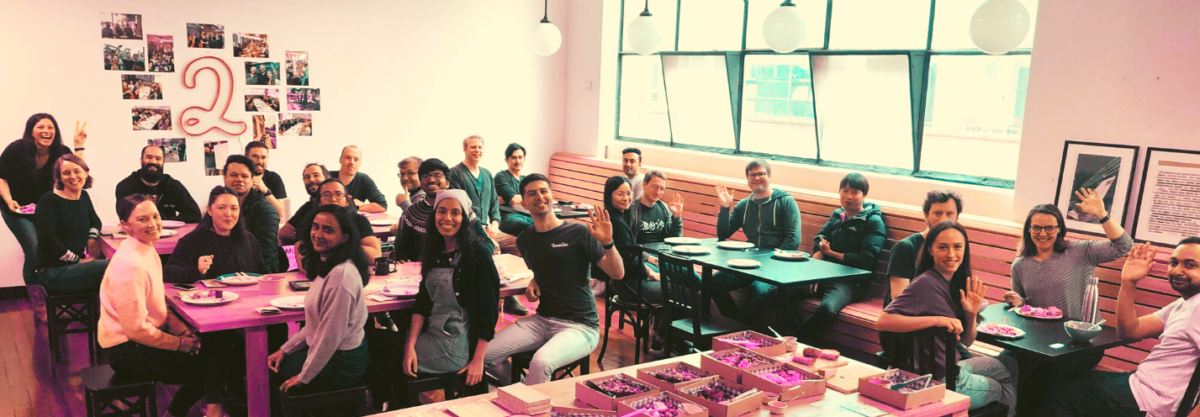We’ve passed the new normal. We’ve evolved, pivoted, ducked and weaved our way through a pandemic, its variants and vaccines. From enforced WFH through to this latest new normal of hybrid working, where combining flexibility with meaningful connection is essential for companies, and their people, to thrive.
The flexible hybrid model is what teams want and businesses need
Pre-pandemic, there was talk about a four-day week. Now, survey after survey shows that most workers want a flexible hybrid model more than almost anything else – even more than the four-day week. According to research by Melbourne Institute, “most workers (88%) would like to work at least part of the workweek at home”.
It’s not surprising given that flexibility can help people better balance work and home life. More time with loved ones, less time commuting sinking copious time in traffic or on public transport.
Companies can benefit by widening their talent pool and hiring people with diverse flexibility needs. Businesses can help increase employees’ productivity via technology and asynchronous work and, for some, even cut costs in office space. We only have to look at the spike in COVID and influenza numbers this winter, to see that a return to rigid in-office only policies would be counter-productive.
Productivity has well and truly been proven
Teams have proven for a long time that they can work from home and be productive. For us, it’s about striking the balance between giving the team enough structure and accountability alongside the autonomy to do the job their way, asynchronously if necessary. It’s not about being physically present between 9 and 5, it’s about getting what you need to get done in the hours that best suit. Open lines of communication are key as are regular 1-on-1 check-ins. We think about when it’s actually necessary to have meetings and try to avoid ‘death-by-too-many-video-calls’. Meeting-free Fridays is an initiative that’s working well.
We believe it is working, we are kicking goals as a business and our team is happy. A recent engagement survey found that 97% of participants would recommend us as a great place to work. We’re pretty proud of the upward trend in our people’s engagement levels particularly given the past two and half years.
Working together to find the balance
One of the biggest challenges is keeping employees deeply connected, so we need ways to ensure information flows and collaboration continues.
With less face-to-face contact, how do we create a sense of belonging and connection to the company’s culture and mission?
At Rome2Rio, we don’t believe in mandating everyone to go to the office full-time, flexibility is our new normal. That said, we’re acutely aware that we have to support our team, our culture, and ultimately deliver a great experience to our customers.
We understand we don’t have all the answers and that our leaders, like myself, have to continuously iterate and work together with everyone else to find the balance. It’s about listening and being open – flexibility means different things for different people – there’s not a ‘one size fits all’ solution.
It’s also essential to invest in tools that make digital connection and collaboration straightforward. While the tools that we use are not atypical of tech companies, we ensure that we make the most of them:
• Video conferencing (Google Meet)
• Instant Messenger (Slack)
• Online Whiteboarding (Miro and Jamboard)
• Task management (Jira)
• Knowledge management (Confluence)
• Employee engagement (Culture Amp)
Cultivating connection and face-to-face collaboration
Having grown used to working from home, and avoiding commuting, people want to feel a benefit for making the effort to go into the office physically.
The obvious benefit is that collaborating with colleagues digitally differs from face-to-face. Conversations in physical settings flow more openly. Visual cues and interactions increase creativity and satisfaction. To make this a reality, we invested in a new office fit-out that facilitates interactions and working with others.
We incentivise groups and leaders to meet in the office to do tasks better suited to face-to-face: like planning or retros. The idea is to make the time in the workplace more relevant and different from that spent working at home. We now put more emphasis on creating situations for the team to get to know each other and interact in a deeper way – like if they worked five days together. Increasingly, we’re creating opportunities to spend quality time together, like our all-hands meetings, lunches, off-sites and social events.
As a business we’re growing quickly – we’re anticipating doubling by the end of the year. This means we have to nurture our new starters to preserve the culture that we built over the last 11 years. From the small things like taking our new starters for lunch on their first day to assigning buddies to a structured six month onboarding program, we do our best to ensure new team members don’t get lost in the cracks. We do six monthly employee engagement surveys and encourage constant two-way feedback loops.
We want our team to connect with each other – as humans. Getting to know each other’s hobbies, passions or about their family helps build the quality of the relationship and usually, work improves.
Navigating these changes is not simple and can generate anxiety, but I’m confident it will lead to workplaces that are better for all.
